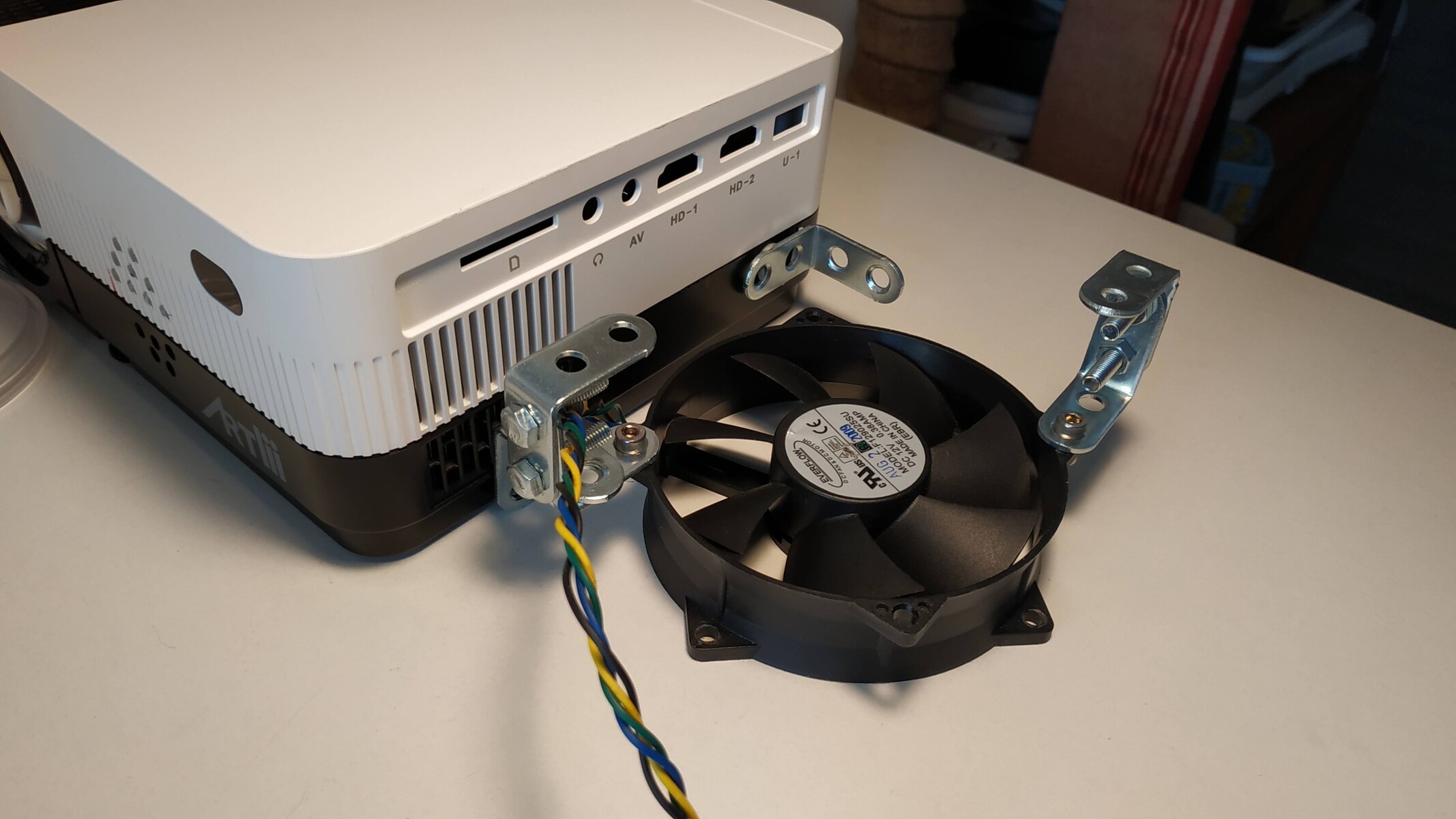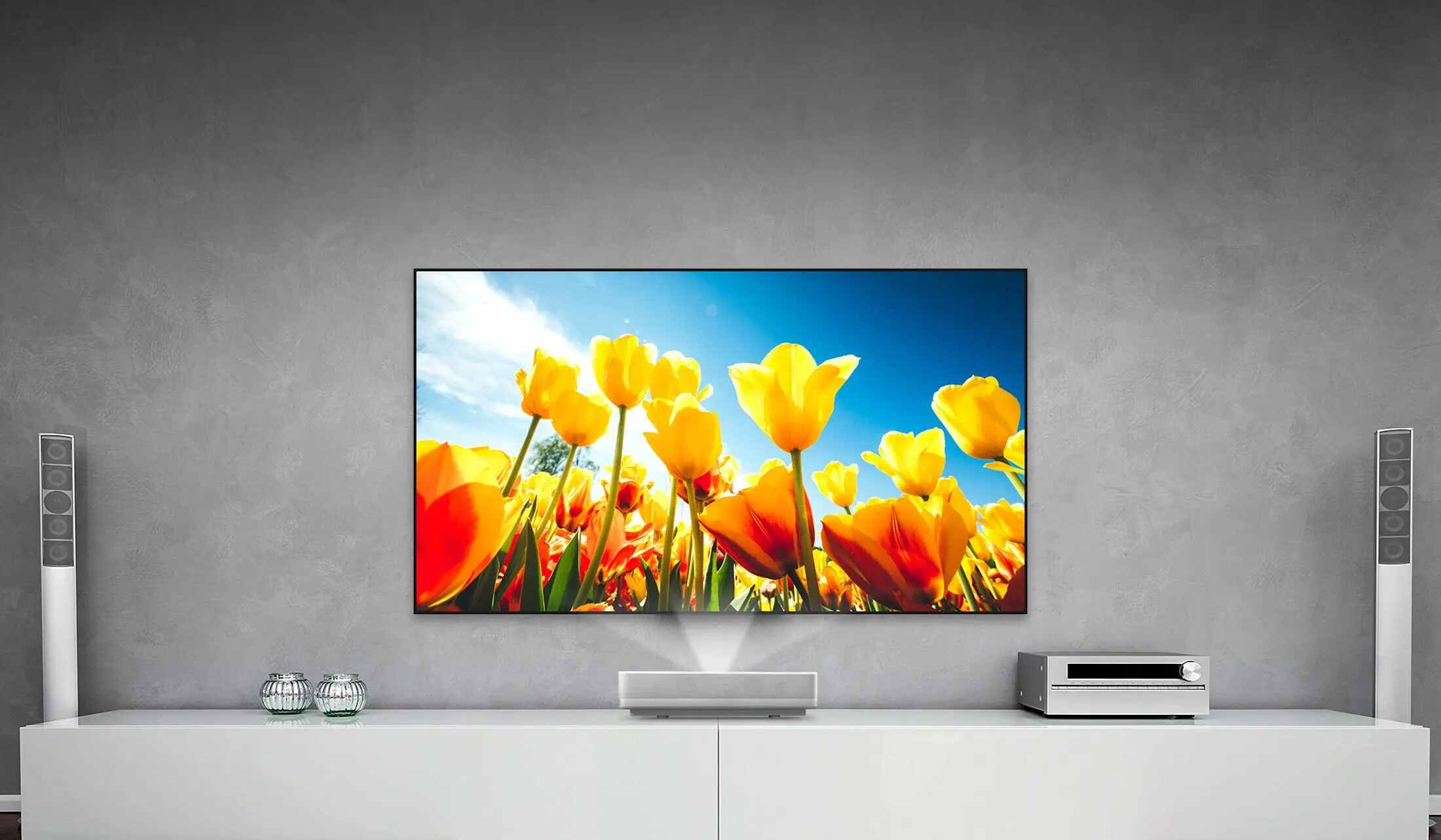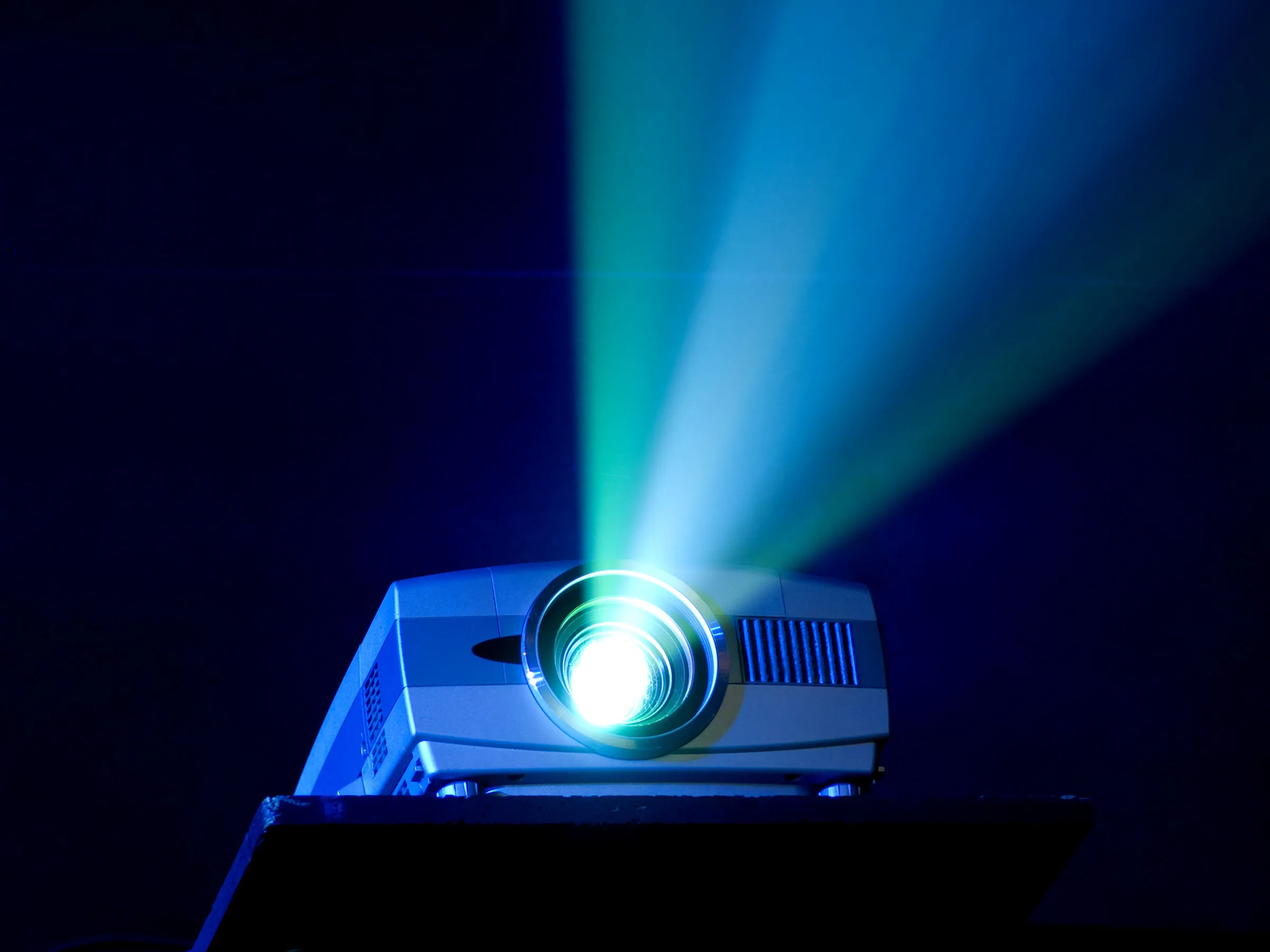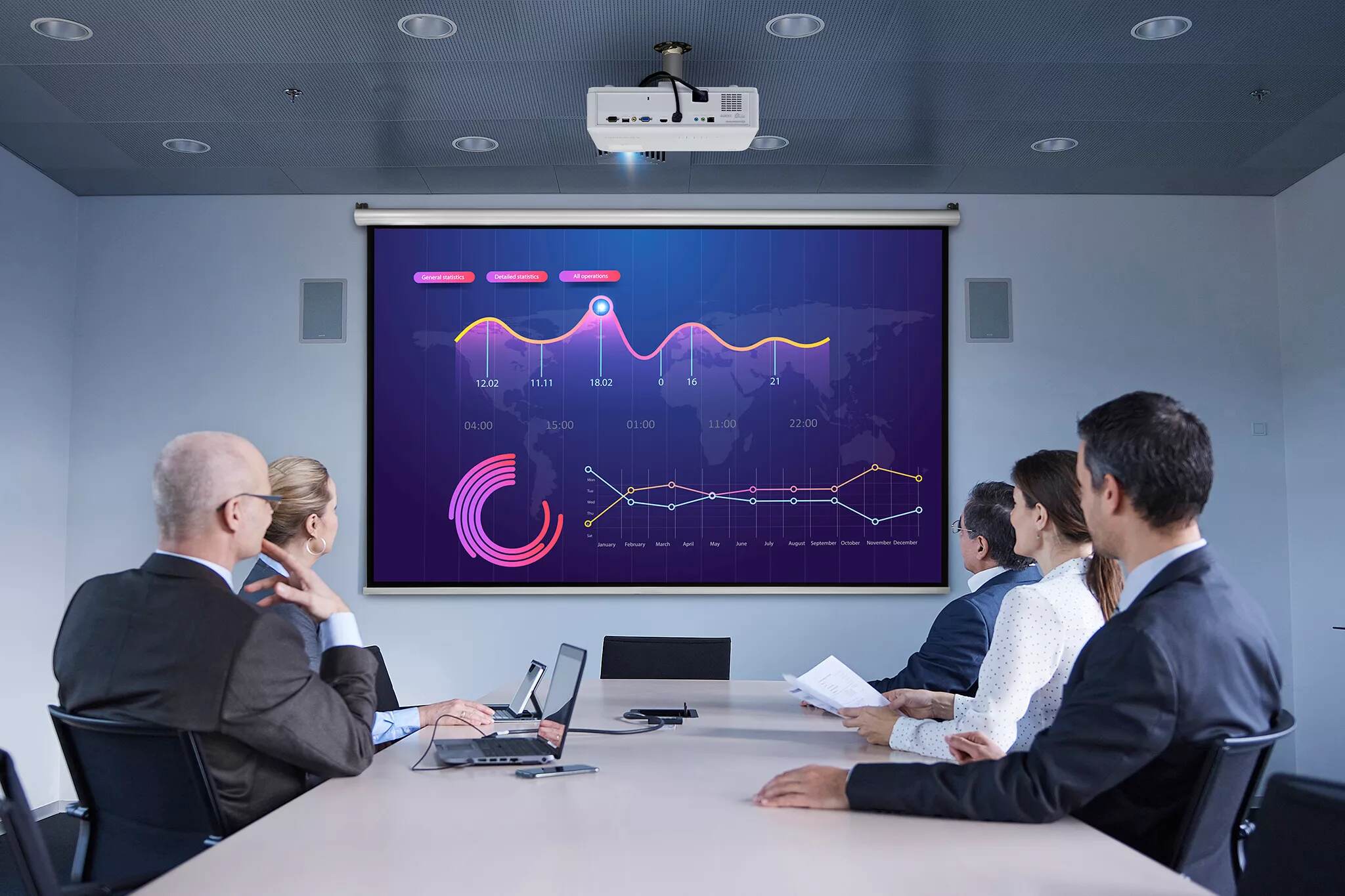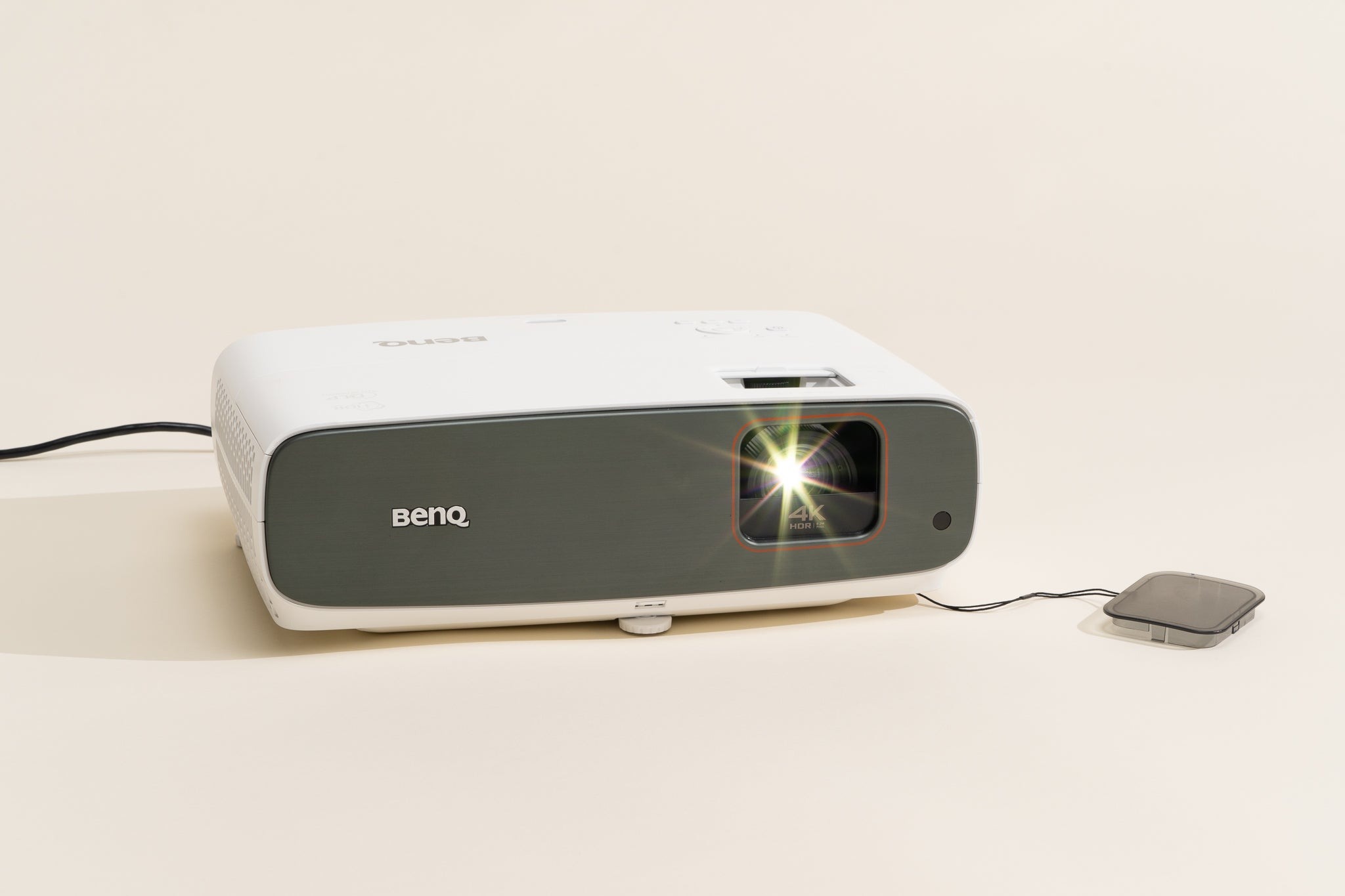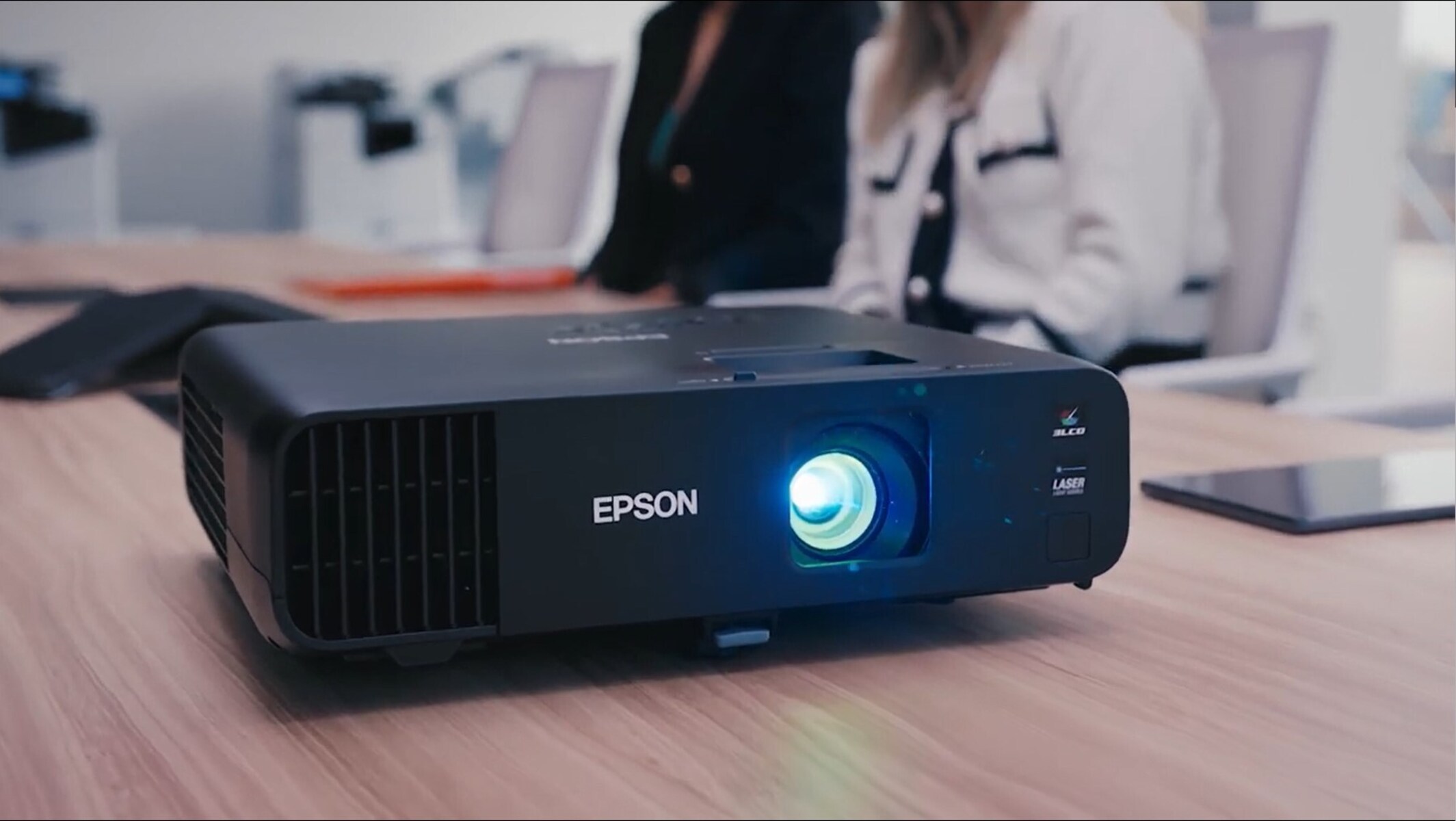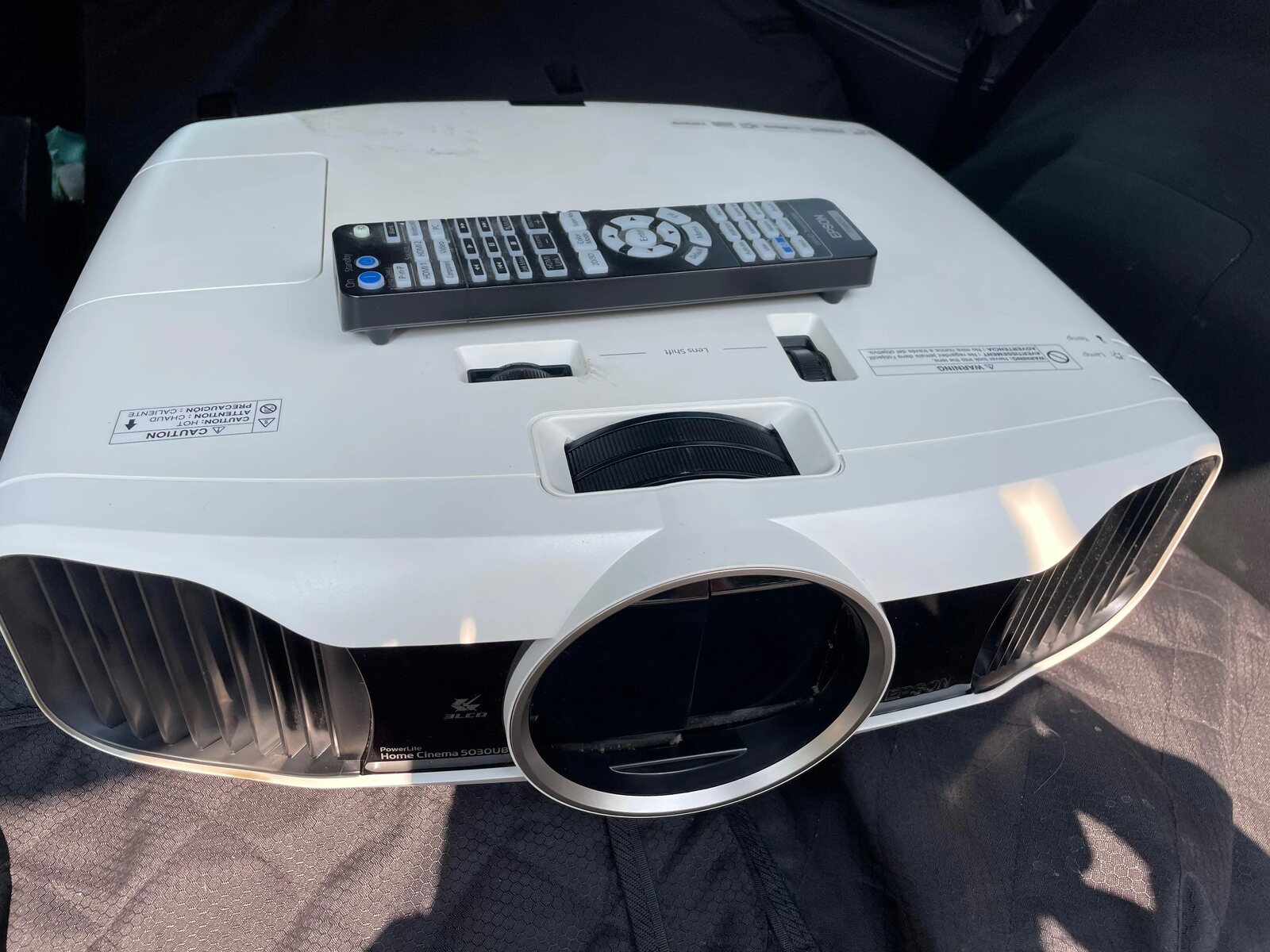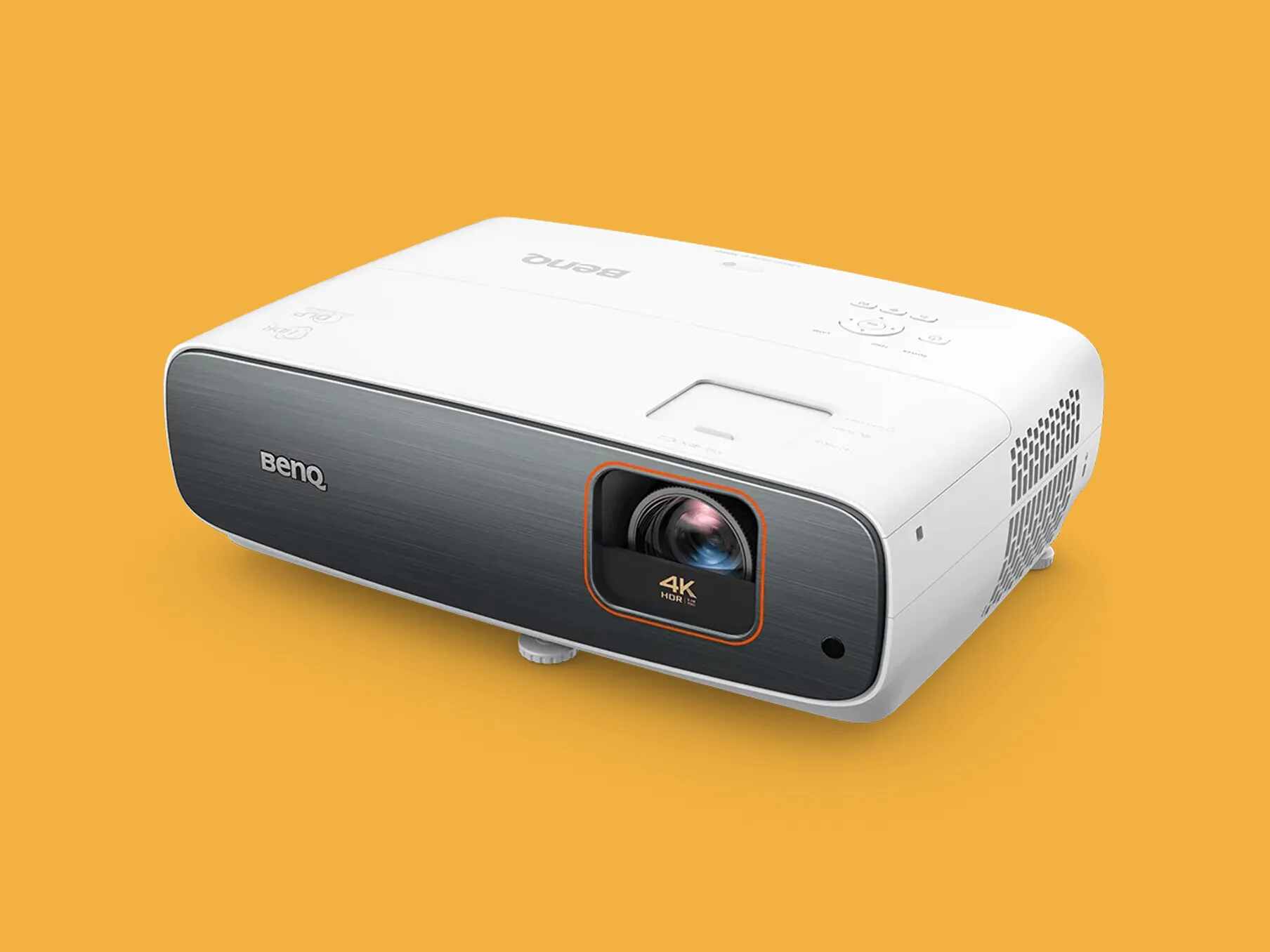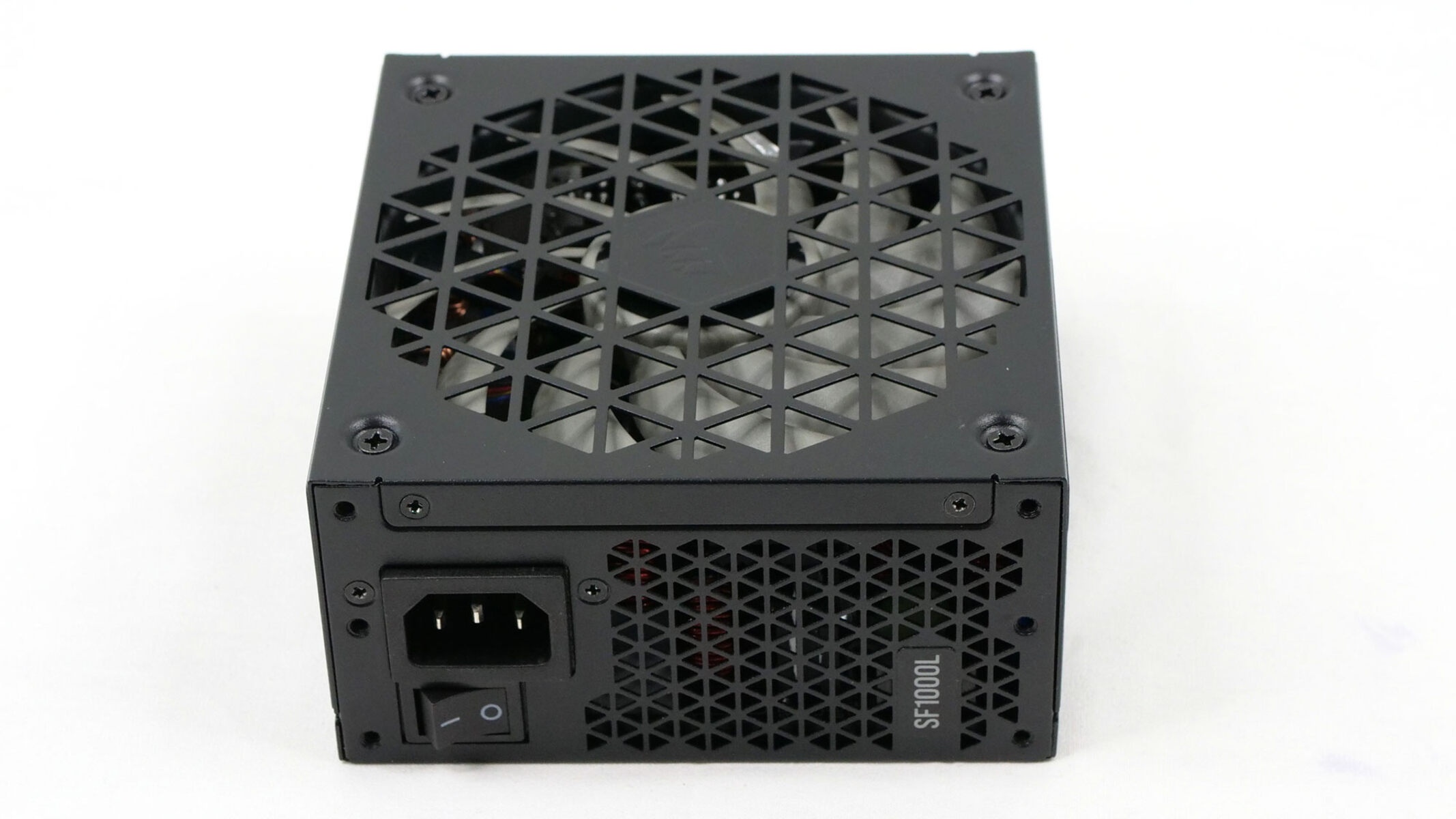Introduction
Welcome to our guide on reducing projector fan noise. If you’ve ever used a projector, you know that the fan can sometimes be quite noisy, which can be distracting and affect the overall viewing experience. Whether you use a projector for home theater, presentations, or gaming, finding ways to minimize fan noise is essential to ensure a more enjoyable and immersive experience.
In this article, we will explore various methods and techniques to help you reduce projector fan noise and create a quieter environment. From optimizing ventilation and cleaning the projector to replacing the fan and utilizing soundproofing methods, we will cover a range of solutions to suit different scenarios and budgets. By implementing these strategies, you can significantly reduce fan noise and enhance your projector’s performance.
Before we delve into the specific methods, it’s important to note that not all projectors are created equal. Different models have varying fan noise levels, so it’s crucial to do your research before purchasing a projector if noise is a concern for you. However, regardless of the model you own or plan to buy, the tips and techniques outlined in this guide can help you minimize projector fan noise.
Now, let’s get started with understanding projector fan noise and why it occurs in the first place. By gaining insights into the causes, we can better address the issue and implement effective solutions. So, without further ado, let’s dive into the world of projector fan noise reduction!
Understanding Projector Fan Noise
Before we start exploring ways to reduce projector fan noise, let’s understand why it occurs in the first place. Projector fans serve a crucial purpose: they keep the internal components of the projector cool to prevent overheating. However, this cooling process often generates noise, which can be bothersome.
The fan noise is primarily a result of two factors: the speed of the fan and the design of the cooling system. Projectors with powerful lamps and higher brightness levels generally require larger and faster fans to dissipate heat effectively. As the fan speeds up to maintain optimal operating temperatures, the noise level naturally increases.
In addition to fan speed, the cooling system design also plays a significant role in noise generation. Some projectors employ more advanced cooling mechanisms that are specifically engineered to reduce fan noise. These systems may include heat pipes, multiple fans for improved airflow, or even liquid cooling technology. However, such advanced cooling features often come at a higher price point.
It’s also worth noting that as projectors age, the fan noise may increase due to accumulated dust or wear and tear on the internal components. Regular maintenance and cleaning can alleviate some of these issues. Understanding the factors contributing to projector fan noise can help us identify the most effective solutions for minimizing it.
While completely eliminating fan noise may not be possible, we can certainly take steps to reduce it to a more tolerable level. In the following sections, we will explore various methods and techniques that address the most common causes of projector fan noise. From optimizing ventilation and maintaining cleanliness to replacing the fan and utilizing soundproofing methods, these solutions can significantly reduce the noise level and improve your overall projector experience.
Checking for Proper Ventilation
One of the primary reasons for excessive projector fan noise is inadequate ventilation. Projectors generate a considerable amount of heat, and if not properly ventilated, this heat buildup can cause the fan to work harder and produce more noise. By ensuring proper ventilation, you can help dissipate the heat more efficiently and reduce fan noise.
The first step in checking for proper ventilation is to review the placement of your projector. Make sure there is enough space around the projector to allow for sufficient airflow. Avoid placing it in a confined space or near obstructions that can obstruct the airflow. Additionally, ensure that there is ample clearance both above and below the projector for proper ventilation.
If you are ceiling-mounting the projector, consider installing it with an adjustable bracket that allows for proper airflow. Angling the projector slightly downward can also help hot air to escape more easily, reducing the strain on the fan and minimizing noise.
Another important aspect to consider is the positioning of the exhaust vents. Most projectors have one or more exhaust vents through which hot air is expelled. Ensure that these vents are not blocked by any objects or surfaces. Clear any obstructions in the vicinity and make sure that the hot air can freely flow away from the projector.
In some cases, you may need to install additional ventilation equipment, such as external fans or extractor vents. These can help improve airflow and reduce the workload on the internal projector fan, leading to quieter operation. However, it is essential to consult the manufacturer’s guidelines or seek professional assistance before making any modifications to your projector’s ventilation system.
Regularly monitoring the projector’s temperature can also give you valuable insights into its cooling performance. Many projectors have built-in temperature sensors or fan speed controls that allow you to monitor and adjust the fan speed accordingly. By keeping an eye on the temperature, you can ensure that the projector is within a safe operating range while maintaining an optimal fan noise level.
By checking for proper ventilation and adhering to these guidelines, you can significantly reduce projector fan noise and enhance the overall viewing experience. In the next section, we will explore the importance of cleaning the projector and how it can contribute to noise reduction.
Cleaning the Projector
Regular cleaning of your projector is not only essential for maintaining picture quality but also plays a significant role in reducing fan noise. Over time, dust and debris can accumulate on the internal components, including the fan, causing it to work harder to maintain cooling. By keeping your projector clean, you can optimize its performance and minimize fan noise.
The first step in cleaning your projector is to turn it off and unplug it from the power source. Allow the projector to cool down before beginning the cleaning process. Once it has cooled, use a soft, lint-free cloth to gently wipe the exterior surfaces, including the lens and vents. Avoid using abrasive materials or harsh chemicals that may damage the projector.
To clean the vents and remove any dust buildup on the fan, you can use a can of compressed air. Hold the can upright and apply short bursts of air to dislodge any dust particles. Be careful not to tilt the can or shake it vigorously, as this can cause liquid propellant to escape, potentially damaging the projector.
If the internal components of the projector are accessible, you may consider opening the casing to clean more thoroughly. However, exercise caution and refer to the manufacturer’s instructions before attempting this. If you are unsure or uncomfortable with this task, it is best to seek professional cleaning services to avoid any potential damage.
It’s also worth noting that some projectors have a filter that helps trap dust and debris. These filters should be regularly checked and cleaned or replaced as recommended by the manufacturer. Clogged filters can obstruct airflow, causing the fan to work harder and produce more noise.
In addition to regular cleaning, you can also minimize dust accumulation by keeping the projector in a clean environment. Avoid placing it in areas prone to dust, such as near open windows or high-traffic areas. Additionally, consider using a dust cover when the projector is not in use, providing an extra layer of protection against dust particles.
By maintaining a clean projector, you can ensure optimal cooling performance and minimize fan noise. In the next section, we will discuss the option of replacing the projector fan as a solution to excessive noise.
Replacing the Projector Fan
If you have tried optimizing ventilation and cleaning the projector but still struggle with excessive fan noise, it may be time to consider replacing the projector fan. Over time, fans can wear out or accumulate dust, leading to increased noise levels. By replacing the fan with a new one, you can restore optimal cooling performance and reduce noise.
Before proceeding with fan replacement, it is essential to determine whether your projector allows for fan replacement and if compatible replacement fans are available. Some projectors have easily accessible fans that can be replaced by the user, while others may require professional assistance.
To begin the replacement process, consult the manufacturer’s instructions or seek guidance from a professional technician. They can help you identify the exact fan model needed for your projector and provide guidance on the specific steps involved in replacing the fan.
When replacing the fan, make sure to select a fan that matches the specifications of the original one. The fan’s size, voltage, and airflow capacity should be compatible with your projector’s requirements to ensure proper cooling functionality. Using an incompatible fan may lead to further issues or even damage your projector.
Before proceeding with the replacement, gather the necessary tools and make sure to follow any safety precautions outlined in the instructions. It’s crucial to handle the internal components of the projector with care to avoid any damage.
Once the replacement fan is installed, power on the projector and monitor the fan’s performance. If done correctly, you should notice a reduction in fan noise, resulting in a quieter operating experience.
If you are not comfortable or confident in replacing the fan yourself, it is advisable to consult a professional technician. They have the expertise and experience to handle the process safely and efficiently, ensuring that your projector operates optimally with reduced fan noise.
Replacing the projector fan can be a more involved solution compared to other methods we’ve discussed. However, if other noise reduction techniques haven’t yielded satisfactory results, replacing the fan may be the most effective way to address excessive fan noise.
In the next section, we will explore various soundproofing methods that can further dampen the projector fan noise and enhance your viewing or presentation experience.
Using Soundproofing Methods
If you’re looking for additional ways to reduce projector fan noise, soundproofing techniques can be highly effective. By implementing soundproofing methods, you can minimize the transmission of noise and create a more peaceful environment for your viewing or presentation needs.
One popular method to reduce noise transmission is by using acoustic panels or sound-absorbing materials in the room where the projector is located. These panels are designed to absorb and dampen sound waves, preventing them from bouncing off hard surfaces and causing echoes or reverberation. By strategically placing these panels around the room, you can minimize the reflection of projector fan noise, resulting in a quieter ambiance.
Another soundproofing option is to use curtains or thick drapes on windows and walls. These fabrics help to absorb sound and reduce external noise from entering the room. By blocking out external noise sources, you can focus on your projected content without distractions from the fan noise.
Sealing any gaps or cracks in the room can also contribute to soundproofing efforts. Use weatherstripping or caulk to seal any openings around windows, doors, or ventilation ducts. By preventing sound leakage, you can create a more isolated and quiet environment for your projector usage.
If the projector is mounted on a ceiling bracket, make sure to isolate it from the ceiling to minimize the transmission of vibrations. Using anti-vibration mounts or rubber pads can help absorb and reduce the vibrations generated by the projector fan, resulting in less noise transfer to the surrounding structure.
If possible, consider dedicating a separate room or area specifically for the projector to minimize noise disturbance. By isolating the projector in its own space, you can further reduce the impact of fan noise on the overall viewing or presentation experience.
Combining multiple soundproofing techniques can yield even better results. Experiment with different methods to find the combination that works best for your specific situation and environment. Keep in mind that the effectiveness of soundproofing methods may vary depending on the room layout, construction materials, and other factors.
By implementing these soundproofing techniques, you can significantly reduce projector fan noise and create a more enjoyable and immersive experience. In the next section, we will explore adjustments you can make to the projector settings to further minimize noise.
Adjusting Projector Settings
While physical methods can help reduce projector fan noise, you can also make adjustments to the projector settings to further minimize noise levels. By optimizing these settings, you can find a balance between performance and noise reduction without compromising your viewing or presentation experience.
One setting to consider adjusting is the projector’s brightness or power mode. Many projectors offer different power modes that vary in brightness levels. Choosing a lower power mode reduces the overall heat generated by the lamp, which in turn reduces the workload on the fan. By sacrificing a bit of brightness, you can achieve quieter operation.
Another setting to look out for is the fan speed control. Some projectors allow you to manually adjust the fan speed settings, giving you more control over the noise level. By setting the fan to a lower speed, you can potentially reduce the fan noise while still maintaining adequate cooling. However, be cautious not to lower the fan speed excessively as it may result in overheating and potential damage to the projector.
Additionally, certain projectors offer an eco mode or a whisper mode specifically designed for quieter operation. Enabling these modes can help reduce fan noise by adjusting various settings like lamp power, cooling system, and fan speed. However, be aware that utilizing eco or whisper modes may result in a slightly dimmer image or reduced performance compared to normal operation.
Some projectors also include a noise reduction or quiet mode feature. These settings aim to reduce fan noise by optimizing the internal components and cooling system. Experiment with enabling these modes to see if they result in a noticeable reduction in fan noise without compromising the image quality too much.
Lastly, consider adjusting the projector’s placement or orientation. Sometimes, simply changing the projector’s angle or distance from the audience can affect how the fan noise is perceived. Experiment with different positions to find the optimal placement that minimizes noise interference.
It’s important to note that not all projectors offer the same settings and features mentioned above. Refer to your projector’s user manual or consult the manufacturer’s website for specific instructions on adjusting settings to minimize fan noise. Each projector model may have unique settings and options available.
By making these adjustments, you can fine-tune your projector’s settings to strike a balance between performance and fan noise reduction. In the next section, we will explore the option of using an external noise reduction system to further enhance your projector experience.
Using an External Noise Reduction System
If you’ve exhausted all other options and still find the projector fan noise to be disruptive, considering an external noise reduction system might be a viable solution. These systems are designed to actively cancel out or mitigate unwanted noise, including the noise generated by the projector fan.
One common type of external noise reduction system is a white noise machine or a background noise generator. These devices emit a constant, soothing background noise that helps mask other sounds, including the noise from the projector fan. By introducing a consistent and pleasant noise into the environment, the fan noise becomes less noticeable and intrusive.
An alternative option is to use noise-cancelling headphones or earbuds. These devices use advanced technology to actively cancel out surrounding noise, allowing you to enjoy your projector content without being disturbed by the fan noise. This is particularly useful for personal viewing or gaming sessions where you can immerse yourself in the audio experience without any distractions.
If you’re looking for a more comprehensive solution, professional-grade soundproofing materials and systems can be considered. These can include acoustic panels, soundproof curtains, or even wall and ceiling insulation designed to absorb and block unwanted noise. Installing these materials or seeking professional soundproofing services can significantly reduce not only projector fan noise but also other environmental noises.
Before investing in an external noise reduction system, it’s crucial to assess your specific needs and budget. Consider the intended usage, the severity of the fan noise issue, and the level of noise reduction required. External noise reduction systems can range in price and complexity, so research and compare different options to find the one that best fits your requirements.
While an external noise reduction system can effectively minimize projector fan noise, it’s important to keep in mind that it may not completely eliminate the noise. The effectiveness of these systems can vary depending on the quality of the device or materials used, as well as the specific environment in which the projector is used.
By using an external noise reduction system alongside other noise reduction techniques such as optimizing ventilation or cleaning the projector, you can create a more peaceful and immersive viewing experience while minimizing fan noise.
As we reach the end of this guide, we hope that the methods and techniques discussed have provided you with valuable insights and solutions to reduce projector fan noise. Remember to explore the options that best suit your specific situation and budget, and don’t hesitate to seek professional assistance if needed. By implementing these strategies, you can enhance your projector experience and enjoy a quieter environment for your entertainment or presentation needs.
Conclusion
Reducing projector fan noise is essential for creating a more enjoyable and immersive viewing or presentation experience. Throughout this guide, we have explored various methods and techniques to help you minimize fan noise and achieve a quieter environment.
We started by understanding the causes of projector fan noise and how it can be affected by factors like ventilation and cooling system design. Checking for proper ventilation and ensuring adequate airflow around the projector can significantly reduce fan noise. Additionally, regular cleaning of the projector and replacing the fan if necessary can optimize its cooling performance and minimize noise.
Soundproofing methods, such as using acoustic panels, sound-absorbing materials, or adapting the placement of the projector, can further dampen fan noise and create a more peaceful environment.
Adjusting projector settings, such as power modes, fan speed control, or utilizing noise reduction features, can help find the right balance between performance and noise reduction.
If these methods do not yield satisfactory results, considering an external noise reduction system, such as a white noise machine or noise-cancelling headphones, can further enhance the quietness of your projector experience.
Remember to consider your specific needs, budget, and the severity of the fan noise issue when exploring these solutions.
By implementing the techniques discussed in this guide, you can significantly reduce projector fan noise and create a more enjoyable environment for your movie nights, presentations, or gaming sessions.
We hope that this guide has provided you with valuable insights and practical solutions to help you minimize projector fan noise. Experiment with different methods and techniques to find the combination that works best for you. Remember, a quieter projector environment can enhance your overall experience and allow you to fully immerse yourself in the content you love.







